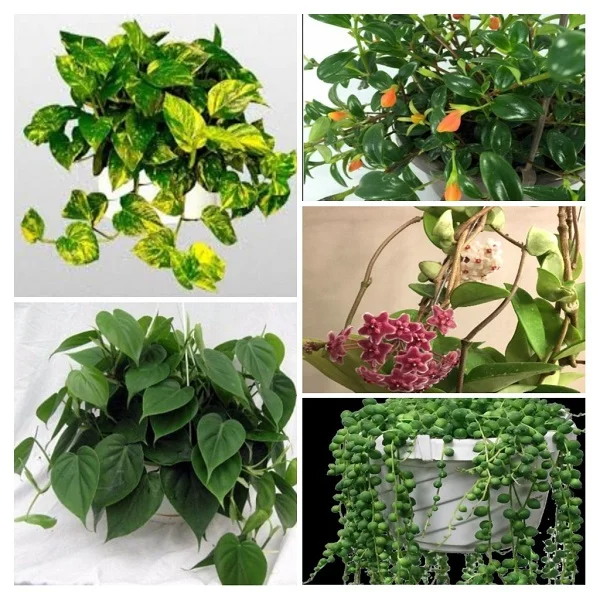12 Hoya Plant Problems and How to Solve Them
Some links in this post may be affiliate links
Hoya Plant problems are yellow leaves, brown leaves, plant dying, leaf drop, shrivelled leaves, flowerbud drop, lack of blooms, pests and diseases among others. Keep reading for more on these problems and how to fix them.
Hoya Plants are popular, vining, flowering plants which bear spectacular clusters of star-shaped, fragrant flowers and fleshy leaves.
Hoya are referred to by many names like Waxplant, Waxvine, Waxflower, Porcelainflower or simply Hoya. The Hoya genus was named by botanist Robert Brown, in honour of his friend, botanist Thomas Hoy.
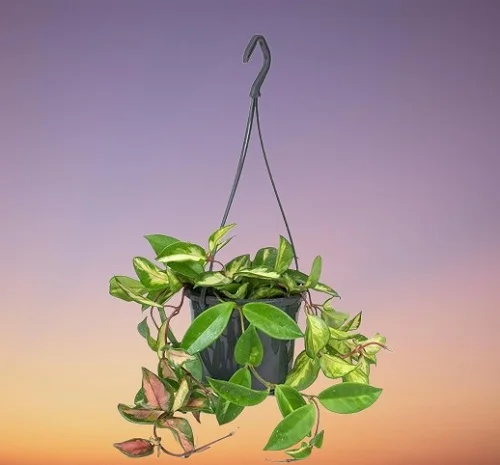
There are over 500 species of Hoya Plant varieties which belong to the family Apocynaceae (Dogbane) family and are native to the tropical regions of Asia with many species also found in Australia.
Care for Hoya Plant
Care for Hoya Plants is easy if the don'ts are observed. Some of these are don't disturb the plant once the buds appear as change in light intensity may cause them to drop.
Don't remove the dead flowers as new flowerbuds will form in the spurs. Don't repot until it is unavoidable as being root-bound encourages flowering. It benefits from loose potting medium that allows some air to get to the roots.
Generally, Hoyas thrive in bright light with with 4-6 hours of direct sunshine, warmth of 16-260C, humidity of 50-55% and moderately moist, rich, well-drained, hoya potting soil coupled with monthly feeding during the growing season. Learn how to grow, care and propagate Hoya carnosa.
If the right growing conditions are not provided, Hoya Plants are bound to present some problems. Keep reading for more on these Hoya growing problems and their solutions.

12 Common Hoya Problems & their Remedies
1. Pests infestations
Hoya are prone to mealybugs, scales and spider mites which attack the soft, growing leaf buds. This causes stunted growth, wilting, yellowing and leaf loss.
How to Fix It
- Isolate the affected plant to prevent spread to the other plants.
- Treat the affected plant with neem oil or insecticidal soap to get rid of the pests. Ensure to follow the manufacturers' recommendations.
- Maintain the plant well pruned to discourage pest infestations.
Regularly check underneath and between the leaves for these pests and take timely control measures.
2. Diseases
Hoya Plant is prone to the following two diseases.
1. Root-rot disease which is enhanced by soggy soil and is characterized by soft wrinkled, smelly leaves.
How to Fix It
- Carefully, slip the plant out of its pot and inspect the roots. Brown mushy roots indicate root-rot, cut them away.
- Treat the healthy roots with a fungicidal solution as recommended by the manufacturer.
- Repot the plant in fresh soil and keep it dry for some time before resuming watering.
- Ensure that the pot has a drainage hole and the soil is free-draining to prevent the soil from getting soggy.
- Cut down on watering in fall and winter to keep the soil slightly moist as growth is minimal at this time.
2. Leaf spot disease which is prevalent in warm, damp conditions and is characterized by small, dark spots on the leaves, stems and flowers.
How to Fix It
- Isolate the affected plant and treat it with horticultural oil as per the manufacturer's instructions.
- Improve ventilation and ensure that there is good air circulation at all times.
- Avoid wetting the foliage and water from the bottom instead to keep the foliage dry.
3. Yellow leaves
Why are my Hoya leaves turning yellow?
Some of the causes of yellow leaves on your Hoya Plant are inconsistent watering, soggy soil, too little light, nutrients deficiency or temperature stress.
How to Fix It
Inconsistent watering: Do not water on a schedule. Water when the top 2-3 inches of soil dry out but do not allow the soilball to dry out completely.
Soggy soil: Use a pot that has a drainage hole and well-draining soil to prevent waterlogging.
Too little light: Move the plant to bright light with 4-6 hours of morning or late afternoon direct sunshine but away from hot midday sun.
If the natural lighting is not adequate, consider installing a full spectrum grow light to supplement it.
Nutrients deficiency: Feed your Hoya Plant with a phosphorous-rich, water-soluble fertilizer every 4 weeks in spring and summer.
Do not feed in fall and winter to prevent fertilizer burn and eventual death of the plant as growth is reduced at this time.
Temperature stress: Keep the plant away from sources of drafts like AC units, hot air vents, stoves, drafty windows, windy doors and others to prevent temperature flactuations.
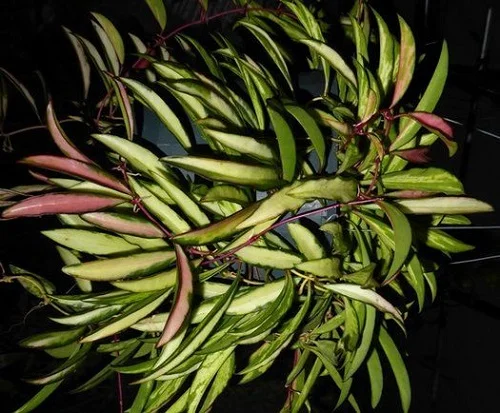
4. Dry Shrivelled (wrinkled) leaves
Dry shriveled leaves on Hoya Plant are caused by underwatering, compacted soil, hot drafts or being extremely pot-bound.
How to Fix It
Underwatering: Water when the top 2-3 inches of soil feel dry but never allow the soil to dry out completely.
Compacted soil: Pot your Hoya in quality Hoya potting mix which loose, well-draining and rich in organic matter.
Hot drafts: Keep the plant away from hot drafts emanating from hot surfaces, hot air vents, stoves and others to prevent extremely high temperatures.
Being extremely pot-bound: Repot the plant into a pot one size larger. Thereafter, repot every 2-3 years.
5. Flowerbud drop
Flowerbuds drop on Hoya Plant is due inconsistent watering, soggy soil, lighting changes, drafts, cold water or dry air.
How to Fix It
Inconsistent watering: Water when the top 2-3 inches of soil feel dry but do not allow the soil to dry out completely. Do not water on a schedule.
Soggy soil: Pot the plant in a pot with a drainage hole and well-draining soil.
Lighting changes: Do not move a Hoya Plant that is in flower.
Drafts: Keep the plant away from drafts to avoid sudden changes in the temperature to maintain a constant warmth of 16-260C.
Cold water: Use water that is at room temperature to avoid cold shock.
Dry air: To increase humidity, set the pot on a wet pebble tray, use a cool mist humidifier or group the plants together.
6. Brown leaves
The main causes of brown leaves on Hoya Plants are inconsistent watering, soggy soil, extreme temperatures or salts buildup.
How to Fix It
Inconsistent watering: Water Hoya when the top 2-3 inches of soil dry out but do not let the soilball dry out completely.
Soggy soil: Ascertain that the pot has a drainage hole and that the soil drains easily.
Extreme temperatures: Keep the plant away from sources of drafts like hot air vents, stove, heat sources, windy doors and windows, AC units and others to maintain an average warmth of 16-260C.
Salts buildup: Occasionally leach out salts by running a stream of water through the soil until it drains through the drainage hole.
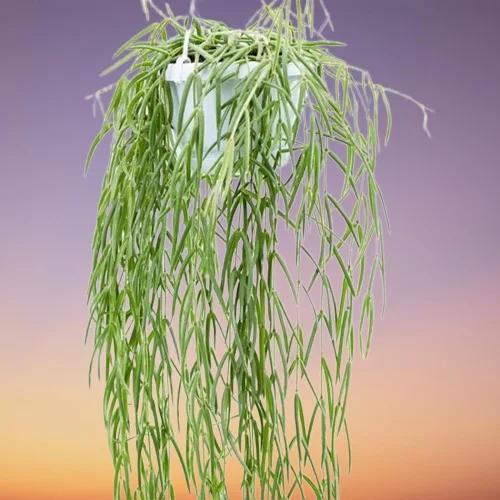
7. Plant dying
Why is my Hoya dying?
Your Hoya is dying due to overwatering, soggy soil, too little light, extreme temperatures, cold water, salts buildup or root-rot.
How to Fix It
Overwatering: Take care not to overwater your Hoya; water only when the top 2-3 inches of soil feel dry. Do not water on a schedule.
Soggy soil: Use a pot with a drainage hole and a well-draining soil to prevent the soil from getting soggy.
Too little light: Move the plant to a brighter spot or use a grow light if the natural lighting is not enough.
Extreme temperatures: Keep the plant away from drafts like hot air vents, stove, heat sources, windy doors and windows, AC units and others.
Cold water: Use water that is at room temperature to avoid shocking the plant.
Salts buildup: Occasionally flush out salts by running a stream of water through the soil until it drains through the drainage hole.
Root-rot: Slip the plant out of its pot and inspect the roots. Brown-black, mushy roots indicate that the plant has root-rot. Treat it as indicated above under the subheading, 'diseases'.
8. Leaf drop
Why is my Hoya dropping leaves?
Your Hoya is dropping leaves due to improper watering, soggy soil, temperature stress, low light or poor feeding.
How to Fix It
Improper watering: Water Hoya when the top 2-3 inches of soil dry out but do not let the soil get completely dry.
Soggy soil: Use a pot that has a drainage hole and soil that is loose, airy and well-draining.
Temperature stress: Keep the plant away from sources of drafts to maintain an average warmth of 16-260C.
Low light: Place the plant where it will receive bright light with some morning or late afternoon sunshine or instal a grow light if the natural lighting is not sufficient.
Poor feeding: Apply a phosphorous-rich, water-soluble fertilizer every 3-4 weeks in spring and summer but do not feed in fall and winter to avoid fertilizer burn and death of the plant.
9. Leggy growth
Leggy growth with wide spaces between leaf nodes coupled with undersized leaves on Hoya Plant are due to too little light or nutrients deficiency.
How to Fix It
Too little light: Move the plant to a brighter spot where it will receive bright light with 4-6 hours of morning or late afternoon sunlight or use a grow light where the natural lighting is not enough.
Nutrients deficiency: Feed your plant with a phosphorous-rich, water-soluble fertilizer every 4 weeks in spring and summer.
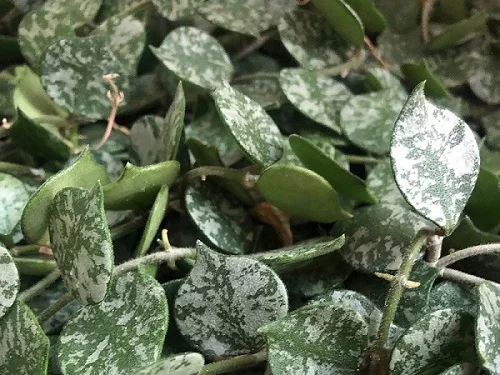
10. Lack of blooms
Lack of blooms on Hoya Plant is due to insufficient light, drafts, cold water or lack of nutrients.
How to Fix It
Insufficient light: Position the plant in bright light with 4-6 hours of morning or late afternoon sunshine or instal a grow light if the natural lighting is not adequate.
Drafts: Keep the plant away from drafts to maintain an average warmth of 16-260C.
Cold water: Use room temperature water to avoid cold shock.
Lack of nutrients: Feed Hoya with a phosphorous-rich, water-soluble fertilizer every 3-4 weeks during the growing season.
11. Curling leaves
Curling leaves on Hoya Plant are caused by sap-sucking pests like mealy bugs, scales and spider Mites. These pests attack the soft growing parts from where they suck the plant sap causing dehydration and distortion of the parts of the plant.
How to Fix It
Regularly inspect the plant for these pests and take timely pest control measures as a heavy infestation can lead to the death of the plant.
12. Toxicity
Hoya Plants produce a milky white sap which contains latex. The latex is considered to be toxic to humans and pets. Always wear gloves when handling these plants and keep them away from the reach of children and pets.
You liked it? Share on social media.
Related Content
Amazon Associates Disclosure
Homeplantsguide.com is a participant in the Amazon Services LLC Associates Program, an affiliate advertising program designed to provide a means for sites to earn advertising fees by advertising and linking to amazon.com.


